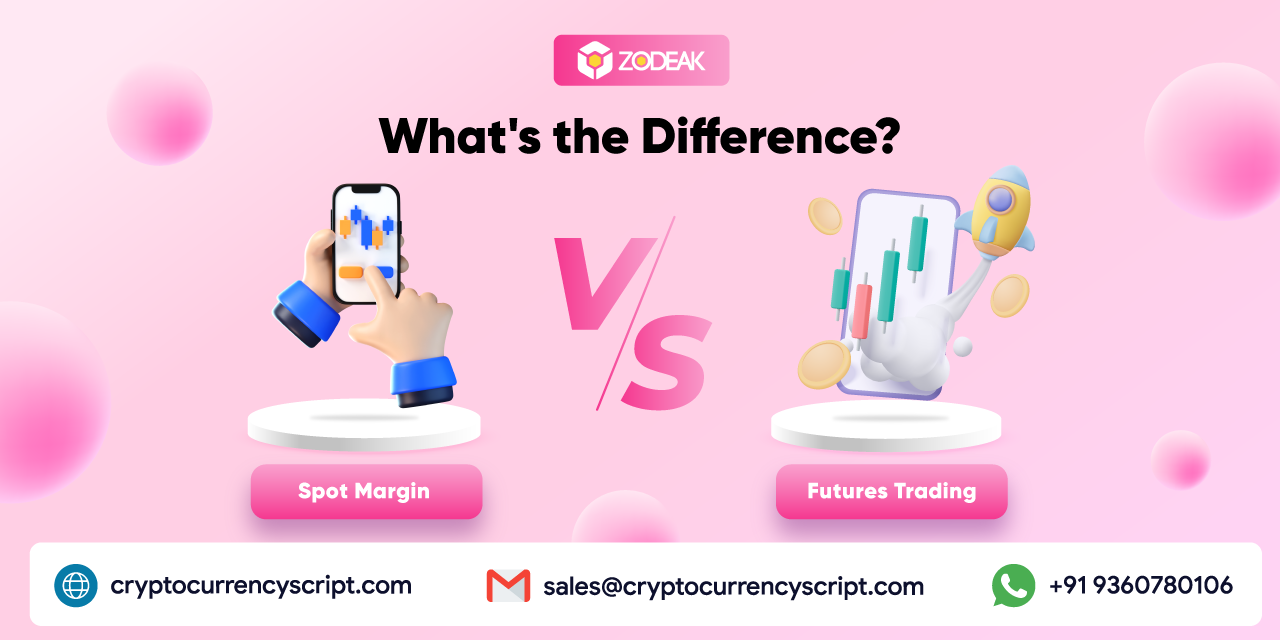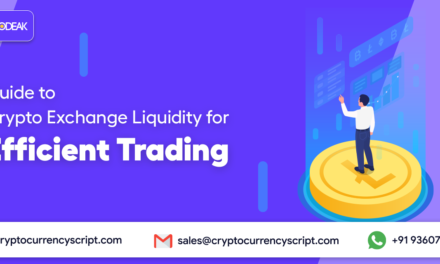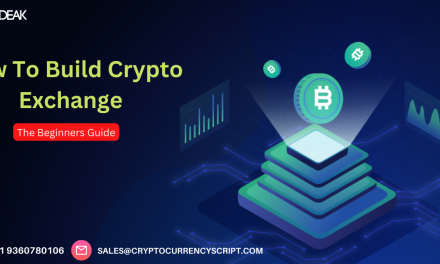As you decide to trade cryptocurrency, you may be stepping into a vast market where countless options to choose from. With so many exchanges out there, each with its own set of features and benefits, it can be challenging to know where to start. Additionally, the highly volatile nature of cryptocurrency prices can make the decision even more daunting.
Once you’ve decided to take the plunge and invest in cryptocurrency, you’ll start to notice many terms and strategies related to trading. Including, spot, spot margin, futures, options, and more strategies for trading crypto. Spot trading is perhaps the most popular and easiest strategy to start with, but other strategies need some knowledge to get started.
So, if you’re new and wondering about the differences between spot margin and futures trading, you came to the right place. Before seeing these different parts let’s have a glance at spot and margin trading first.
Understanding Spot Trading
Spot trading is a basic way of buying and selling things, and it’s really common, especially with crypto assets. In spot trading, you directly buy or sell something like a commodity, stock, bond, or money. In the crypto world, it’s the same idea – you directly buy or sell cryptocurrencies.
When you do spot trading with cryptocurrencies, it’s like exchanging them immediately between users who are buying and selling. Just think of it like buying something in a store – once you pay, you own it. On crypto exchange, where spot trading happens, users agree on prices to make these trades possible.
This strategy is used anytime and anywhere because it’s all online. If you’re new, you can use fiat to buy cryptocurrencies on these platforms and even decide at what price you want to buy them.
Understanding Margin Trading
Margin trading is a form of trade that involves borrowed funds to capitalize on the future price movements of an asset, like Bitcoin. It is more similar to performance speculation than spot trading. Margin accounts allow users to borrow funds from a third party, which can lead to higher profits or losses through leverage.
Other traders provide the borrowed funds, earning interest based on market demand. To kickstart the margin trading process, the investor or users must commit some collateral.
For example, if a trader wanted to open a margin trade at a leverage ratio of 10:1 for $10,000, the trader would need to invest $1,000 as collateral.
Hope you have a few insights into above said strategies right? Well now let’s see what spot margin trading is.
Understanding Spot Margin Trading
Spot margin trading introduces a dynamic dimension to traditional spot trading, enabling users to leverage their trading capabilities and leverage borrowed funds from the platform.
This means participants can make larger trades than their current capital allows. However, this enhanced capability comes with specific considerations. First, foreign exchange involves the use of borrowed funds, and this introduces a risk factor.
Users must provide collateral in the form of other margin assets to secure their loan. While traders maintain ownership of the purchased asset, there is potential liquidation risk in the event of unfavorable market movements.
This risk is particularly pronounce when the loan-to-value ratio reaches a level that prompts the site to initiate liquidation proceedings. Spot margin trading requires a nuanced understanding of foreign exchange, collateral, and related ownership dynamics to navigate the market effectively.
Hope you understand the spot margin, right? Now, let’s see what futures trading is.
Understanding the Futures Trading
Crypto futures trading involves the purchase and sale of contracts that commit the buyer or seller to buy or sell a cryptocurrency asset at a predetermined price and date in the future. This enables traders to speculate on the asset’s price without actual ownership. Typically conducted on centralized exchanges, crypto futures trading commonly utilizes perpetual contracts, which lack an expiration date.
An essential benefit of engaging in crypto futures trading is the ability to employ leverage, potentially amplifying profits. However, it’s crucial to note that leverage is a complex tool that can be lucrative when used wisely. This aspect renders crypto futures trading a valuable instrument for traders seeking to speculate on cryptocurrency prices, but it is not advisable for beginners or those with a lower risk tolerance.
Now, it is time to see the difference between spot margin and futures trading.
Spot Margin Trading Vs Futures Trading
| Point of Difference | Spot Margin Trading | Futures Trading |
| Contracts | This involves the direct purchase or sale of an asset at the current market price. | Involves the agreement to buy or sell an asset at a predetermined future date and price. |
| Expiration Date | No fixed expiration date, as trades occur instantly at the prevailing market price. | Contracts have a predetermined expiration date, after which they are settled. |
| Trading Fee | Transaction fees are generally lower, as they involve immediate execution. | This may include additional costs like maintenance fees and expiration-related fees. |
| Leverage | Leverage is usually lower or non-existent, as trades are settled immediately. | Allows for higher leverage, enabling traders to control a larger position size with a smaller amount of capital. |
| Borrowing | No borrowing is involved, as assets are owned outright. | Traders may need to borrow to meet margin requirements, depending on the leverage used. |
| Collateral | Limited or no collateral is required, as trades are settled instantly. | Traders need to maintain a margin account with sufficient collateral to cover potential losses. |
| Source of Profit | Profit is generated through price appreciation or depreciation of the underlying asset. | Profit is derived from correctly predicting price movements and leveraging positions. |
| Liquidation Risk | Minimal liquidation risk, as trades are executed immediately at the prevailing market price.Spot Margin Trading Vs Futures Trading | Higher liquidation risk due to the possibility of adverse price movements before the contract expiration. |
| Liquidation Indicator | No specific liquidation indicator, as positions are closed in real time. | Triggered by reaching a certain level of margin depletion, prompting automatic liquidation. |
| Liquidation Consequences | Immediate settlement with gains or losses realized instantly. | May result in losses beyond the initially invested amount, depending on the leverage used. |
| Timing | Trades can be executed at any time when the market is open. | Limited to specific contract expiration dates, requiring traders to plan for future market movements. |
| Purpose | Often used for straightforward investment or hedging purposes. | Popular for speculation, risk management, and hedging against future price movements. |
Final Words
In conclusion, spot trading proves simple and instinctive, making it a great choice for beginners starting their crypto trading journey. Nevertheless, futures trading offers strategic advantages that can increase your profits. Succeeding in crypto trading depends on having the right knowledge is important.
For that, Zodeak blogs and experts can help you in that area. As they are a leading cryptocurrency exchange development company they can help you with unbiased answers and insights.





